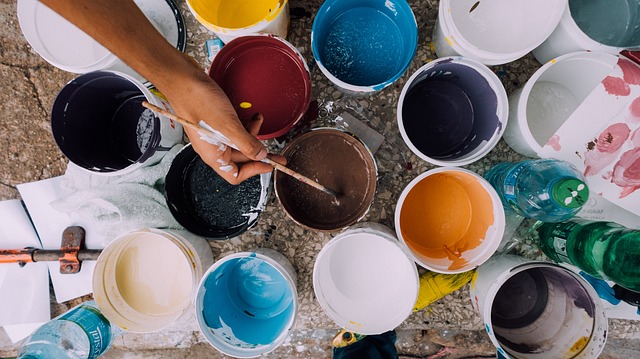Throughout my career, I have noticed a tension between creativity and productivity. In my more productive times, I’m checking off items in my to-do list one at a time. For each item, I have a clear understanding of what I need to do. I can simply do it. Often, the first thing on the list is: make a to-do list. That way, I can check off the first item when I finish the list.
The point is, I don’t really take to-do list all that seriously. Though it is nice to get stuff done, there is nothing in the list that indicates which items are more valuable, or which items require the most creativity.
Managing creativity, whether my own or that of my employees, is like checking off to-do lists without any sense of the relative value of each item. One project might require multiple failed prototypes before success. A second project might just flow with an early breakthrough. In either case, when we report back to the agile coach, each story has the same value—whatever we assigned it prior to doing it. In the first case, we were much less productive than the second because it took us much more time to finish, even if the first project is more likely a better solution because of multiple failed iterations.
The Harvard Business Review (HBR) has commissioned several studies on what it calls the paradox of creativity. Perhaps the best one makes the claim that “To Get More Creative, Get Less Productive.” In another study, “The Creative Benefits of Boredom,” the HBR author cites two compelling research studies that show how creativity is boosted by boredom. In the studies, some subjects did menial tasks for several hours and then were tested on their creative abilities. Those who did the menial tasks were much more creative than the control group, who did not do menial tasks prior to the test. The bored subjects performed much better in cognitive tests related to creativity.
These studies jive with my personal experiences. I often solve problems when I am not thinking about them, but focused on a menial task, like weeding. Some of my most important insights come to me in the shower, something I have done mechanically tens of thousands of times. I also have a lot of success cracking the code of some mystery while on a long walk or bike ride. When I am required to do something creative and difficult on a deadline, I can sometimes push through. But I never feel like the forced-march approach is conducive to my best work.
In the last eight years, I have been on dozens of agile teams that face the paradox of creativity every day. Creativity cannot be time boxed. It ebbs and flows and generally requires much more time than initial estimates. Creatives are forced to game the system by sizing their stories very large in case they get stuck. But agile coaches love small stories so they can maximize velocity. On a side note, I see more creative teams going to kanban over scrum because the former removes the temptation to shove creativity through predefined time boxes. But a lot of managers prefer scrum because it measures productivity in a more scientific way.
However it is measured, productivity growth has slowed way down in the last decade, as this chart shows.

There are a lot of theories as to why productivity growth is down despite a huge increase in available computational power. My view is it is tied to creativity. In the early days, computers could help us do menial tasks a lot faster. Writing a letter, for example, is orders of magnitude faster than it was prior to word processors. We had a huge increase in research productivity once the Web matured. But we reached a point of diminishing returns because we couldn’t automate creativity.
This is where the next revolution in productivity has to come from: using artificial intelligence to help automate creativity.
How does AI solve the paradox of creativity?
Some AI research focuses on machines that create art or music or poetry. This is not the kind of AI I am focused on here. I’m talking about technology that assists creative people by helping them make better decisions. While machine-created art is an interesting thought experiment, humans connect with art because it helps them connect with the human who created it. The same can be said of products or content or other goods or services. Humans ultimately consume it over the competing products or services because of human factors.
Every creative act is a choice to do something a certain way. I chose to write in the first person in this article, for example. That choice affects much of the structure of the article as well as its tone. AI could help writers make these kinds of choices—the ones that are not governed by rigid rules but are matters of design and style.
For example, by giving me intelligence about what the audience is likely to find more engaging, AI writing systems can help me design this article so that it connects with the largest set of interested readers. An example of an AI writing assistant is Acrolinx, an authoring plug-in that understands what you’re writing and to whom it is targeted, so that you do a better job.
Some might say the act of writing is so intimately intertwined with these choices that AI systems actually take the creativity away. I suppose this is true to some extent. I could, for example, carefully do a lot of research on the audience and use that to craft the article. This was my method of writing prior to using Acrolinx. It was time-consuming and painstaking. I burned a lot of creative juices doing these tasks. And I tried the patience of many an editor or project manager because my writing was often late. In short, I had the same amount of creativity as I do now, I was just less productive.
By letting the system make the easier choices, I can focus on the harder choices, like the structure of the article, flow of the writing, the strength of its arguments, and any emotional appeals that cannot be automated, at least not yet.
AI can help designers as it helps writers. We can do user research to discover the triggers that make humans choose one product over another. We can codify the research. And we can use it in systems to help designers create better products or services. We can then iterate on product releases, continually learning from customers as we go, and feeding this data into the design systems. That’s how AI will help companies increase productivity while allowing creativity to ebb and flow.







